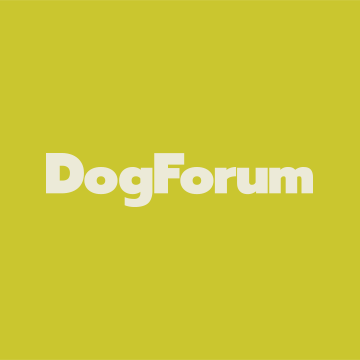This is a bit long'ish, for which I apologize in advance. But, it's also my swan song on this topic, so...
I'm new to this site, and to golden retrievers (and, maybe should keep quite and defer to those who know more than I?


). Hopefully, the OP has been able to successfully address their specific concerns, and has moved on to enjoy their life-in-general and their golden-in-particular.
I've already addressed my attitude towards ingredients and potential impacts on dilated cardiomyopathy (DCM) in goldens. But, just for sake of everything-in-one-place, I'll reiterate that I'm avoiding any food that includes peas, potatos, etc. in the ingredient list. Any causal linkage between these ingredients and DCM in goldens is not a proven, but, with the wide assortment of foods to select from, there's no need to take any chances.
The follow-on discussion on this thread about the relative priorities and value of the WSAVA is interesting, but doesn't really track. Because, as others have already stated, the WSAVA doesn't recommend any specific brands or formulations. But, the WSAVA does provide some criteria it recommends people use in assessing potential foods, and these criteria can be assessed on their own merit, independent of who did/did-not pay for them to be proposed.
I'm synopsizing from WSAVA's glossy, which can be found
here.
Does the manufacturer employ a full-time, qualified nutritionist?
Who formulates the manufacturer's foods and what are their credentials?
I lump these together. While there is a level of comfort in knowing a manufacturer has qualified nutritionists on staff, that doesn't mean that all of the manufacturer's products are going to meet everyone's standards for "top shelf". First, there seems to be variation, even amongst "the experts", on what constitutes "top shelf" ingredients. Second, the reality is that not everyone cares; many will buy based on price, not ingredients. And, none of the manufacturers are in this business to lose money, or pass up a chance on sales. Even if a manufacturer was highly altruistic in their approach and product, that means nothing if they cannot stay in business.
So, good "comfort level", but not an absolute discriminator.
Do your diets meet AAFCO nutrient profiles? By analysis or forumulation?
This is a bit more helpful, especially with the AAFCO statements on the product. This is one of the three best criteria I have found so far, and the easiest to understand. I somewhat get the check on "how" the nutrient profile is determined, but it's somewhat moot when other factors get mixed into the equation.
Food formulated for puppies? Check.
Food formulated to be complete and balanced? Check.
Nice, straightforward, and easy. The whole story? Nope. But, answers two significant questions that should be asked.
Where are the foods produced and manufactured?
What quality control measures are used in the manufacture of food?
Personally, "where produced" is huge. Is it a guarantee? Nope. Quality control measures can fail, irrespective of reason or intent. But, some locales simply engender more faith in the oversight and management of the quality of the ingredients.
Can the manufacturer provide an exact (vice "guaranteed analysis") measure for a nutrient?
I imagine this can be nice, but I question if it is "necessary". My rationale is a concept called "false precision". It's possible to be incredibly precise, yet still miss the mark. And, what is the real-world import of 1.1% vice 1.2%? Especially if I'm not using similar precision in the portion size?
Maybe similar to the nutritionist criteria. A good "comfort level", but not an absolute discriminator.
What is the caloric value of manufacturer's food?
Okay, something that is, more-or-less, another straightforward-and-simple. How many calories does my four-legged family member need? How much of this product do they need to eat to get those calories?
What product research has been conducted, and is it published?
Yeah, another "comfort level", but not an absolute discriminator.
So, WSAVA proposes 8 criteria to use when assessing which pet food to purchase. Of these, I find that 4 are "nice, but not definitive", and 4 can be directly applied in making a selection. But, all are worthwhile, and there's not really an overt bias for/against any group of manufacturers.
But, the FDA has some input, too
Which brings up the "two biggies" (well,"three", no, "four") for me. These are mandated by the
FDA, and are, in my mind, much more helpful in the final assessment.
Ingredient List
While part of me is highly annoyed that this list can be gamed (ingredient splitting), and that there is no percent-by-weight or other objective quantification of the ingredients, it at least provides the opportunity to screen for desired/undesired ingredients.
Guaranteed Analysis
Okay, it's not the "exact measure" that WSAVA recommends. But, it's enough to make some "good enough" assessments. And, this is impacted by another factor, which I'll mention shortly.
Nutritional Adequacy
Ah...that nice, short, straightforward declarative.
Feeding Directions
Initially, I didn't pay much attention to this. But then, I asked myself a question. If kibble-brand-A has twice the percentage of X than kibble-brand-B, does that really mean my puppy is getting twice-as-much-X if I feed kibble-brand-A? It seems that the answer would be "no", if the feeding directions call for 1/2 the amount compared to kibble-brand-B.
So, I'm looking at both the "guaranteed analysis" and "feeding directions" to determine if enough of X is being included in the daily feedings.
Parenthetically, while I recognize the value of nutrient dense foods, my brief experience with our four-legged-kibble-vacuum tells me she might just appreciate an extra half-cup of "filler", as long as it doesn't cause her problems.
And, finally...
Does it really matter what WSAVA's objectives are, or motivations? Not really. Their recommended criteria are good, albeit not the end-all-be-all. There's other criteria to consider, mandated by other organizations. There's also your vet's recommendations. It may take a bit of slogging-through-the-Internet, but finding a food that you feel comfortable feeding your four-legged-family-member can be done.




